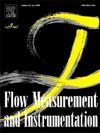Experimental study on transient self-priming process of rotary lobe pump
IF 2.3
3区 工程技术
Q2 ENGINEERING, MECHANICAL
引用次数: 0
Abstract
The objective of this study is to examine the variations in self-priming performance and external characteristic parameters of a rotor pump during the start-up and self-priming transition phases. To this end, a self-priming performance test apparatus, appropriate for high suction range pumps, was developed. By monitoring the fluctuations in inlet vacuum levels and external characteristic parameters throughout the self-priming process, experiments were conducted under five distinct conditions: inlet vacuum levels of 0.07 MPa, and rotational speeds of 200 rpm, 250 rpm, 300 rpm, 350 rpm, and 400 rpm. The results obtained offer insights into the alterations in external characteristic parameters during the self-priming process. Based on the phase state of the suction medium, the self-priming process can be categorized into three stages: the inspiratory stage, the gas-liquid mixed transport stage, and the normal operation stage. The experimental findings indicate that the operating speed significantly influences the self-priming process, primarily reflected in the changes in external parameters. The response of shaft power to the inlet vacuum degree is more pronounced at higher speeds. From the perspective of flow rate variation, the rate of flow change is faster at higher speeds, and the conveying efficiency is higher during the gas-liquid mixed transport stage. Analyzing the self-priming performance reveals that speed has a greater impact on the inspiratory stage of the self-priming process and a lesser impact on the gas-liquid mixed transport stage. The differences in the duration of the self-priming process at various speeds are mainly attributed to the duration of the inspiratory stage.
求助全文
约1分钟内获得全文
求助全文
来源期刊

Flow Measurement and Instrumentation
工程技术-工程:机械
CiteScore
4.30
自引率
13.60%
发文量
123
审稿时长
6 months
期刊介绍:
Flow Measurement and Instrumentation is dedicated to disseminating the latest research results on all aspects of flow measurement, in both closed conduits and open channels. The design of flow measurement systems involves a wide variety of multidisciplinary activities including modelling the flow sensor, the fluid flow and the sensor/fluid interactions through the use of computation techniques; the development of advanced transducer systems and their associated signal processing and the laboratory and field assessment of the overall system under ideal and disturbed conditions.
FMI is the essential forum for critical information exchange, and contributions are particularly encouraged in the following areas of interest:
Modelling: the application of mathematical and computational modelling to the interaction of fluid dynamics with flowmeters, including flowmeter behaviour, improved flowmeter design and installation problems. Application of CAD/CAE techniques to flowmeter modelling are eligible.
Design and development: the detailed design of the flowmeter head and/or signal processing aspects of novel flowmeters. Emphasis is given to papers identifying new sensor configurations, multisensor flow measurement systems, non-intrusive flow metering techniques and the application of microelectronic techniques in smart or intelligent systems.
Calibration techniques: including descriptions of new or existing calibration facilities and techniques, calibration data from different flowmeter types, and calibration intercomparison data from different laboratories.
Installation effect data: dealing with the effects of non-ideal flow conditions on flowmeters. Papers combining a theoretical understanding of flowmeter behaviour with experimental work are particularly welcome.
 求助内容:
求助内容: 应助结果提醒方式:
应助结果提醒方式:


